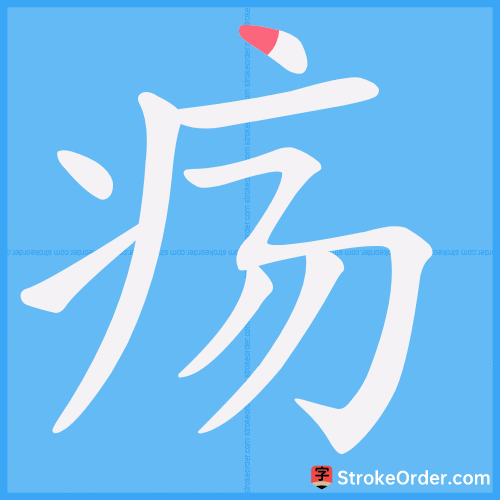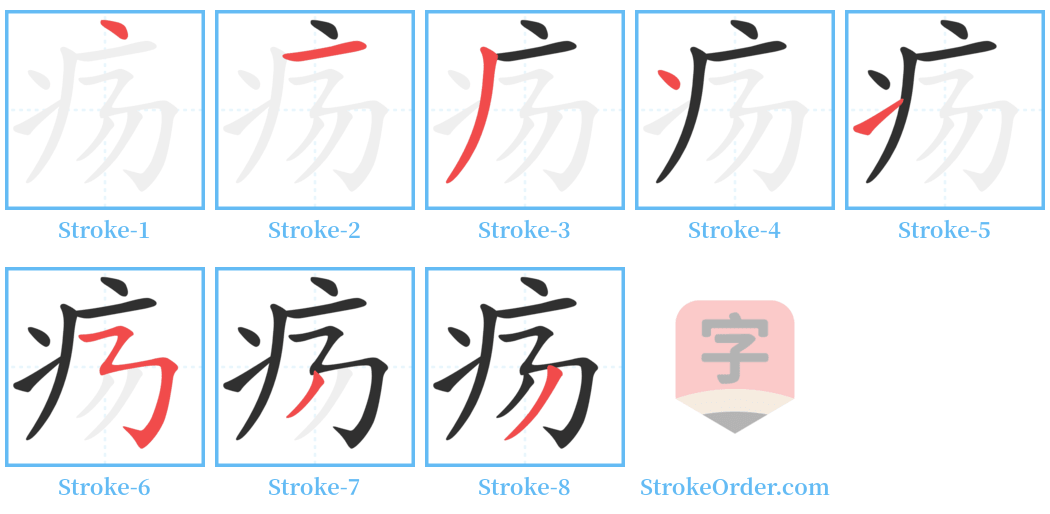疡 Stroke Order
Animated Stroke Order of 疡

Stroke Order Diagrams for 疡

Step-by-Step Handwriting Guide for 疡

Learn to Write Chinese Characters with Video Tutorials
Watch the video of writing the Chinese character "疡", learn the correct stroke order (笔顺) of the character "疡", and master the standard way of writing the character "疡".
Free Printable Handwriting Practice with Stroke Order: 疡
Printable Writing Practice Worksheet of "疡" in Portrait Orientation (Tian Zi Ge)

Printable Writing Practice Worksheet of "疡" in Landscape Orientation (Tian Zi Ge)

Information of 疡
Pinyin
yáng
Radical
疒
Strokes
8 strokes
Usage
★★★★
Definition
ulcers / sores
疡 (yáng)
1. A general term for sores, carbuncles, abscesses, and boils; wounds.
2. Ulceration; to become rotten.
Definitions:
1. 疮、痈、疽、疖等的通称,创伤。
A general term for sores, carbuncles, abscesses, and boils; wounds.
2. 溃烂。
破损,溃烂 ([En.] be damaged; ulcerate)
Historical References:
1. 头创也。 (From "Shuowen Jiezi": A head injury.)
2. 头有创曰疡。 (From "Shiming": An injury on the head is called 疡.)
3. 身伤曰疡。 (From "Zhouli: Yishi": Bodily injuries are referred to as 疡.)
4. 骨干疡为微。 (From "Erya": The term for bone injuries is minor.)
5. 头有创则沐,身有疡则浴。 (From "Liji": If there is a wound on the head, one should bathe; if there is an ulcer on the body, one should wash.)
Examples:
- 疡子 (yáng zi): A term referring to sores in general.
- 疡痍 (yáng yí): Sores, carbuncles, or wounds.
- 疡医 (yáng yī): An official doctor in the Zhou Dynasty; in later times, refers to a surgeon treating wounds.
动 (verb):
1. 破损,溃烂 ([En.] be damaged; ulcerate)
Examples:
- 胃溃疡 (wèi kuì yáng): Stomach ulcer.
- 疡溃 (yáng kuì): To become damaged and rotten.
- 疡微 (yáng wēi): Ulcer; metaphorically refers to rotten phenomena.
Input Method for 疡
Pinyin
yang2
Wubi
unre
Cangjie
knsh
Zhengma
tyod
Four Corner
00127
Unicode
U+75a1
Same Pronunciation Characters